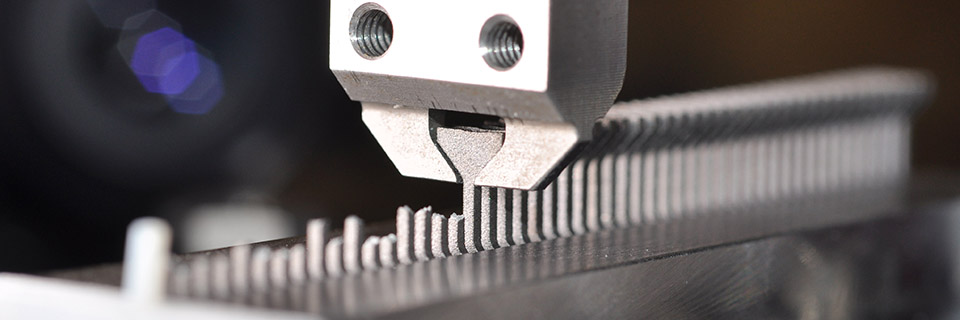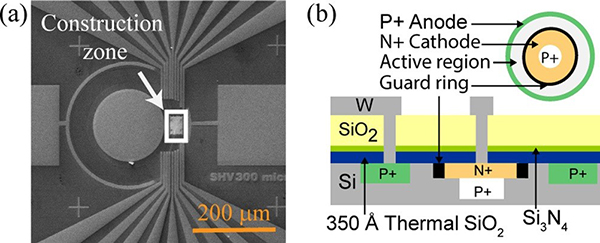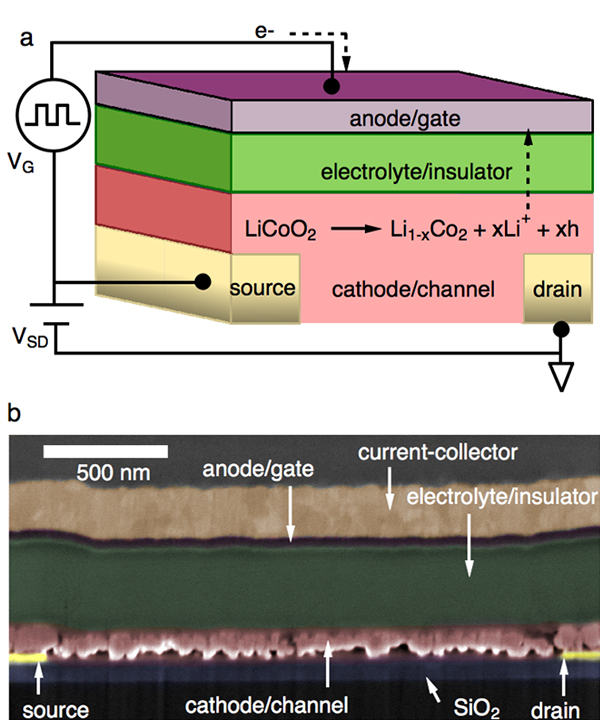
A new step toward quantum computing

Universal qubits can be made using the electron spin of a donor atom in close proximity to an electron quantum dot. All previous successful efforts to make these devices relied on stochastic placement of donor atoms. Though these techniques worked, they had extremely low yield, preventing meaningful integration. Sandia scientists Mike Lilly et. al. have developed and demonstrated a new technique allowing for the precise control of donor placement during fabrication, increasing qubit yield and bringing quantum computers one step closer to reality. (1100, 1700)
Sandia has streamlined a high-throughput tensile test method (see photo above) to rapidly evaluate the mechanical performance and reliability of structural materials. The method permits hundreds of tensile tests in the same time and for the same cost as ~5 conventional tensile tests, with no sacrifice in data fidelity. Engineers in Sandia’s Materials Science and Engineering Center are using this new capability to assess variation in the mechanical performance of additively manufactured alloy components. The approach enables new materials or manufacturing processes that are agile, affordable, and assured. (1800)
A novel nonvolatile transistor

A diagram of a LISTA device (top) and a scanning electron microscope image showing the device cross section.
By taking advantage of materials and phenomena from solid-state batteries, Sandia researchers have demonstrated a novel nonvolatile transistor based on Li-ion intercalation that has all the required attributes for an artificial synapse in a neuromorphic computer architecture: stable multi-level analog states, “write” linearity, low “write” noise, low switching voltage, and potential for scalability and low power dissipation. Simulations of backpropagation using the experimentally measured device properties achieve the highest classification accuracy with an energy cost per “write” operation of